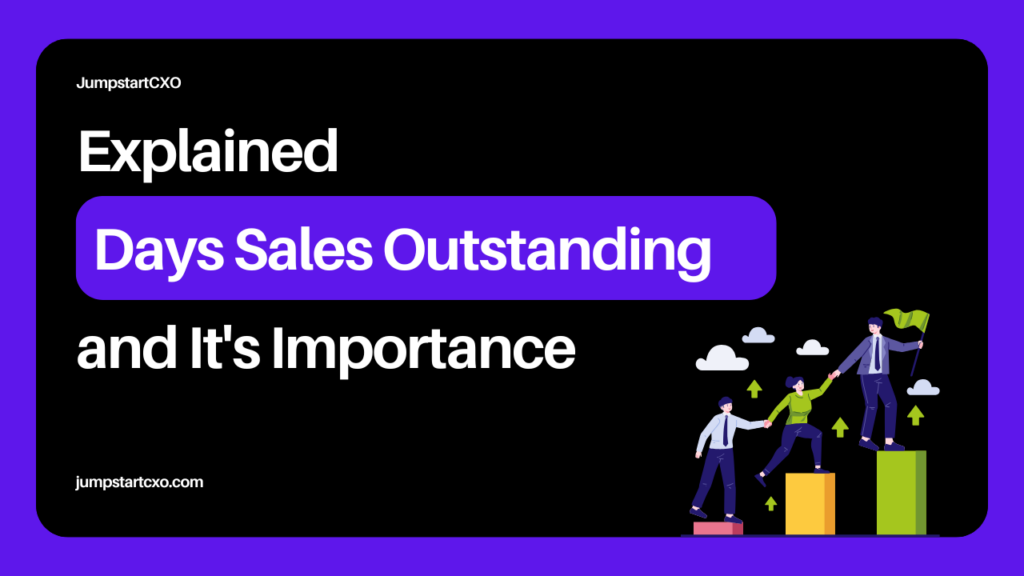In the world of business finance, understanding and managing your cash flow is crucial for maintaining operational efficiency and financial health.
One key metric that helps in assessing your cash flow is Days Sales Outstanding (DSO).
This metric measures the average number of days it takes for a company to collect payment after a sale is made.
By understanding and optimizing your DSO, you can improve your cash flow, reduce the risk of late payments, and ensure the long-term sustainability of your business.
This comprehensive guide explores what Days Sales Outstanding is, how to calculate it, and why it is important for your business.
Introduction to Days Sales Outstanding (DSO)
Days Sales Outstanding (DSO) is a financial metric that indicates the average number of days it takes for a company to receive payments after making a sale.
It is a crucial indicator of a company’s ability to convert its sales into cash, which is essential for maintaining a healthy cash flow.
By monitoring and optimizing your DSO, you can ensure that your business has the necessary liquidity to meet its financial obligations and invest in growth opportunities.
Why is Days Sales Outstanding Important?
Understanding and managing your Days Sales Outstanding is vital for several reasons:
- Cash Flow Management: A high DSO indicates that your company is taking longer to collect payments, which can strain your cash flow. By reducing your DSO, you can improve your cash flow and ensure that you have the necessary funds to operate smoothly.
- Financial Health: Monitoring your DSO helps you assess your company’s financial health. A lower DSO indicates that your company is efficient in converting sales into cash, which is a sign of strong financial management.
- Risk Management: High DSO values can indicate a higher risk of late payments or bad debts. By monitoring your DSO, you can identify potential issues early and take corrective action to mitigate risks.
- Operational Efficiency: Optimizing your DSO can improve your operational efficiency by ensuring that you have the necessary cash to meet your expenses and invest in growth opportunities.
- Customer Relationships: Understanding DSO helps in managing customer relationships effectively. It allows you to identify customers who consistently pay on time and those who frequently pay late, enabling you to take appropriate actions.
- Working Capital Management: A lower DSO means that your company can convert sales into cash more quickly, reducing the need for external financing and improving your working capital management.

How to Calculate Days Sales Outstanding (DSO)
Calculating your Days Sales Outstanding involves a straightforward formula that considers your accounts receivable, credit sales, and the number of days in the period you are analyzing. Here’s how to calculate your DSO:
DSO Formula
The formula for calculating Days Sales Outstanding is as follows:
DSO = (Accounts Receivable ÷ Credit Sales) × Number of Days
Steps to Calculate DSO
- Determine Your Accounts Receivable: Accounts receivable refers to the total amount of outstanding invoices or the money owed to your company by customers for goods or services delivered. This information can be found in your company’s balance sheet.
- Calculate Your Credit Sales: Credit sales refer to the total sales made on credit during the period you are analyzing. This information can be found in your company’s income statement.
- Identify the Number of Days: The number of days refers to the total number of days in the period you are analyzing. For example, if you are analyzing a quarter, the number of days would be 90.
- Apply the DSO Formula: Use the formula to calculate your DSO. This will give you the average number of days it takes for your company to collect payments after making a sale.
Example Calculation
Let’s say your company has the following data for a quarter:
- Accounts Receivable: $500,000
- Credit Sales: $2,000,000
- Number of Days: 90
Using the DSO formula:
DSO = (500,000 ÷ 2,000,000) × 90 = 22.5 days
This means that, on average, it takes your company 22.5 days to collect payments after making a sale.
Factors Affecting Days Sales Outstanding
Several factors can affect your Days Sales Outstanding, and understanding these factors can help you optimize your DSO and improve your cash flow.
Payment Terms
The payment terms you offer to your customers can significantly impact your DSO. Offering longer payment terms can increase your DSO, as customers will take longer to pay their invoices. Conversely, offering shorter payment terms or early payment discounts can encourage customers to pay sooner, reducing your DSO.
Customer Payment Behavior
The payment behavior of your customers can also affect your DSO. Customers who consistently pay on time will help lower your DSO, while customers who frequently pay late will increase your DSO. It is essential to monitor your customers’ payment behavior and take action to encourage timely payments.
Invoicing and Collection Processes
Efficient invoicing and collection processes can help reduce your DSO. Sending invoices promptly and following up on overdue payments can encourage customers to pay sooner.
Additionally, using automated invoicing and collection systems can improve the efficiency of your collection processes and reduce your DSO.
Credit Policy
Your company’s credit policy can also impact your DSO. Offering credit to customers with a history of late payments can increase your DSO and the risk of bad debts. Conversely, implementing a strict credit policy and conducting credit checks on new customers can help reduce your DSO and minimize the risk of late payments.
Economic Conditions
Economic conditions can also affect your DSO. During economic downturns, customers may take longer to pay their invoices, increasing your DSO. Conversely, during economic upturns, customers may pay sooner, reducing your DSO. It is essential to monitor economic conditions and adjust your collection strategies accordingly.
Strategies to Improve Days Sales Outstanding
Improving your Days Sales Outstanding can help enhance your cash flow and ensure the long-term sustainability of your business. Here are some strategies to help you optimize your DSO:
Offer Early Payment Discounts
Offering early payment discounts can encourage customers to pay their invoices sooner, reducing your DSO. For example, you can offer a 2% discount if customers pay their invoices within 10 days. This can incentivize customers to prioritize paying your invoices, improving your cash flow.
Implement Strict Credit Policies
Implementing strict credit policies can help reduce your DSO by minimizing the risk of late payments. Conduct credit checks on new customers to assess their creditworthiness and set credit limits based on their payment history. Additionally, consider offering credit only to customers with a history of timely payments.
Optimize Your Invoicing Process
Optimizing your invoicing process can help reduce your DSO. Send invoices promptly after delivering goods or services to minimize the time between delivery and payment. Additionally, ensure that your invoices are clear and accurate, including all relevant details such as the invoice number, due date, and payment terms.
If you want to optimize your DSO to enhance cash flow, refer to 10 Ways to Improve Collections and Cash Flow for proven strategies.
Use Automated Collection Systems
Using automated collection systems can improve the efficiency of your collection processes and reduce your DSO. Automated systems can send reminders to customers as their payment due dates approach, follow up on overdue payments, and provide real-time insights into your collection efforts. This can help you collect payments more quickly and improve your cash flow.
Monitor and Analyze Your DSO
Regularly monitoring and analyzing your DSO can help you identify trends and areas for improvement. Track your DSO over time to identify patterns and potential issues, such as increases in late payments or changes in customer payment behavior. Use this information to adjust your collection strategies and optimize your DSO.
Communicate with Customers
Effective communication with customers can help reduce your DSO. Regularly follow up with customers on overdue payments and address any concerns or issues that may be delaying payment. Additionally, consider offering flexible payment terms or plans to customers facing financial difficulties to encourage timely payments.
The Role of Technology in Improving Days Sales Outstanding
Technology plays a crucial role in improving Days Sales Outstanding by enhancing the efficiency and effectiveness of your collection processes. Here are some ways technology can help optimize your DSO:
Automated Invoicing and Payment Reminders
Automated invoicing and payment reminder systems can help reduce your DSO by ensuring that invoices are sent promptly and reminders are sent to customers as their payment due dates approach. This automation reduces the manual effort required for follow-ups and improves collection efficiency.
Real-Time Analytics and Reporting
Real-time analytics and reporting tools can provide valuable insights into your collection efforts and help you identify areas for improvement. By monitoring your DSO and other key metrics in real-time, you can make data-driven decisions to optimize your collection processes and reduce your DSO.
Integrated Payment Systems
Integrated payment systems can help reduce your DSO by providing customers with convenient and secure payment options. By offering multiple payment methods, such as credit card, electronic funds transfer, and mobile payments, you can encourage customers to pay sooner and improve your cash flow.
Credit Management Software
Credit management software can help you assess the creditworthiness of new customers and set credit limits based on their payment history. This can help minimize the risk of late payments and reduce your DSO. Additionally, credit management software can provide real-time insights into your customers’ credit status, helping you make informed decisions about offering credit.
To dive deeper into accounts receivable KPIs like DSO, check out Accounts Receivable Management for SMEs: The Ultimate Guide for a full overview.
Challenges in Managing Days Sales Outstanding
While optimizing your Days Sales Outstanding can provide numerous benefits, it also presents challenges that businesses need to consider.
Customer Relationships
Managing your DSO can sometimes strain customer relationships, especially if you implement strict credit policies or follow up aggressively on overdue payments. It is essential to maintain a balance between optimizing your DSO and preserving customer relationships.
Economic Fluctuations
Economic fluctuations can impact your DSO, as customers may take longer to pay their invoices during economic downturns. It is essential to monitor economic conditions and adjust your collection strategies accordingly to minimize the impact on your DSO.
Operational Complexity
Optimizing your DSO can add operational complexity, as it requires implementing new processes, technologies, and strategies. It is essential to ensure that your team is trained and equipped to handle these changes and that your systems are integrated to support your collection efforts.
Data Accuracy
Ensuring the accuracy of your accounts receivable and credit sales data is crucial for calculating an accurate DSO. Any inaccuracies in your data can lead to incorrect DSO calculations, affecting your ability to make informed decisions.
Conclusion
Understanding and managing your Days Sales Outstanding is crucial for maintaining a healthy cash flow and ensuring the long-term sustainability of your business. By calculating your DSO, identifying the factors that affect it, and implementing strategies to optimize it, you can improve your cash flow, reduce the risk of late payments, and enhance your overall financial health. Take action today to assess your DSO and make strategic adjustments to drive business success.




